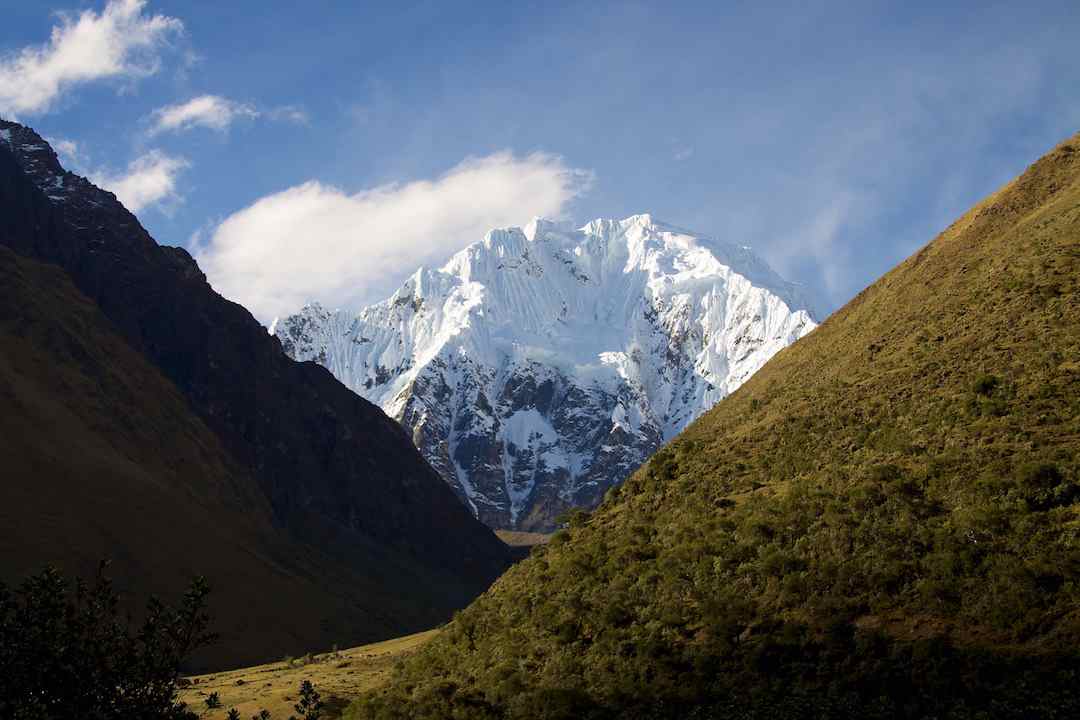As one of the new seven wonders of the world with its alluring scenery and majestic ruins, Machu Picchu has become an extremely popular destination in South America. The landmark’s overwhelming demand has made the road less travelled (the Salkantay Trek) ever more enticing compared to the busiest route: the Inca Trail.
(discover here the training for Machu Picchu)
The Salkantay Trek will take you on a journey through the flora and fauna of the Andean Jungle to the sacred Salkantay Mountain before reaching the ancient Inca citadel of Machu Picchu.
Since it can be challenging to discover information on this lesser known route, we have gathered everything you need to know about taking the Salkantay Trek. In particular you will find the perks of choosing Salkantay over the Inca trail, tips for booking your trip and detailed trail information.
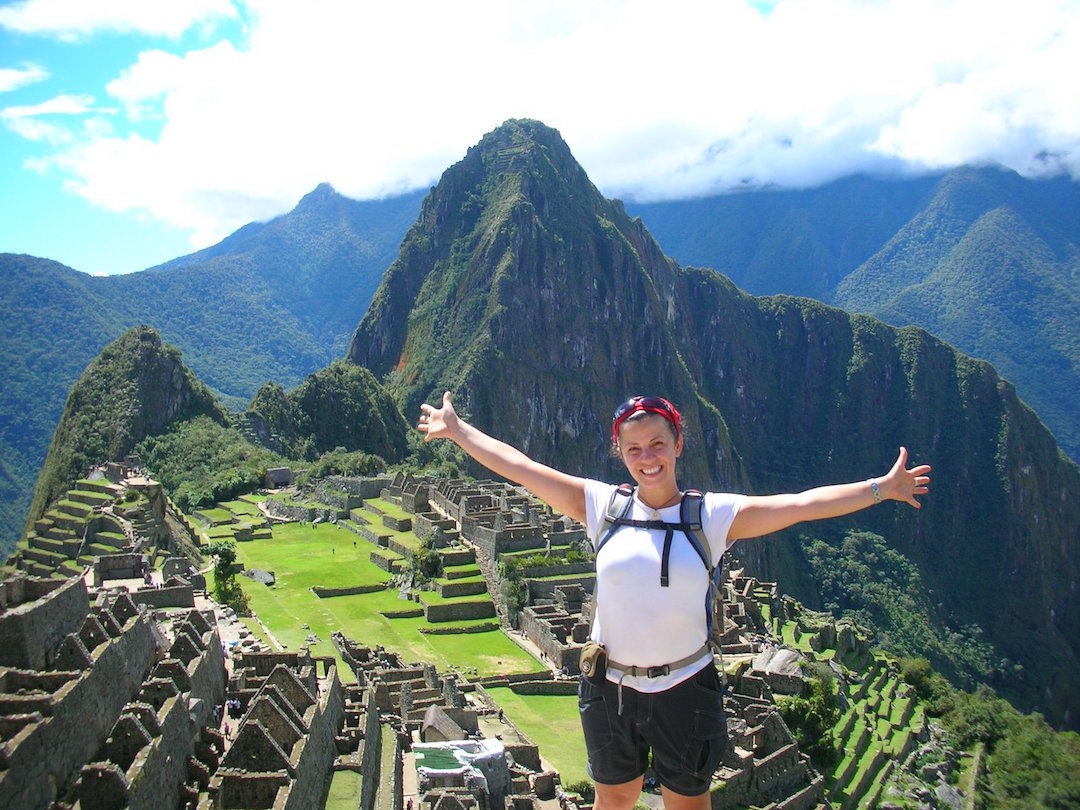
Perks of Opting for Salkantay over the Inca Trail:
What can you expect from Salkantay Tour?
While the Inca Trail may be the most well-known route to Machu Picchu, this does not necessarily mean it is the best trail. The Salkantay Trek has many benefits over Inca that are unrealized by most adventurers.
1. Booking Flexibility
In order to get a permit for the Inca trail, it is advised to book 6 months in advance, which certainly puts a hitch in the plans of spontaneous travelers. This is because the Inca trail only authorizes 500 hikers to enter the trail each day. Salkantay has no permit limitations, which allows for decreased booking lead time and more flexibility.
2. Less Crowds
Despite permit limits, the renowned Inca trail can get quite crowded. This can paint the experience with frustrating shades of touristy. The Salkantay trek allows you to go off the beaten path for a more secluded adventure, which means increased space to embrace your inner Inca.
3. Mountain and Jungle Scenery
While the Inca trail offers additional ancient ruins, the Salkantay Trek will allow you to discover some of the most remarkable features of Mother Nature’s beauty. Over the course of the Salkantay Trek, you’ll dip your feet in the beautiful glacial lake of Humantay, traverse past the Salkantay Mountain (the highest peak in the Willkapampa range), descend into the lush, subtropical cloud forest, and harvest and roast your own coffee from the region’s local coffee farm. These nature-rich experiences boast a wide variety of scenery, with the best Inca ruins left as the final reward at the end.
Do you want to travel through Peru as part of a small group tour? Check our options here.
4. Bonus Excursions – Ziplining or Hot Springs
Whether you are an adventure junkie or rejuvenation fiend the Salkantay Trek has the excursion for you. On the fourth day of your journey, you can opt to go ziplining at Cola de Mono (the highest zipline in South America) or to be transported to an oasis where you can get a well-deserved soak in the hot springs of Colcamayu. These excursions are unique to the Salkantay Trek.
5. Cost Effectiveness
Because the Inca trail is in such high demand, it is easier to find a budget-friendly tour via the Salkantay route. Additionally, the money that you do spend will likely go a longer way on the Salkantay Trek.
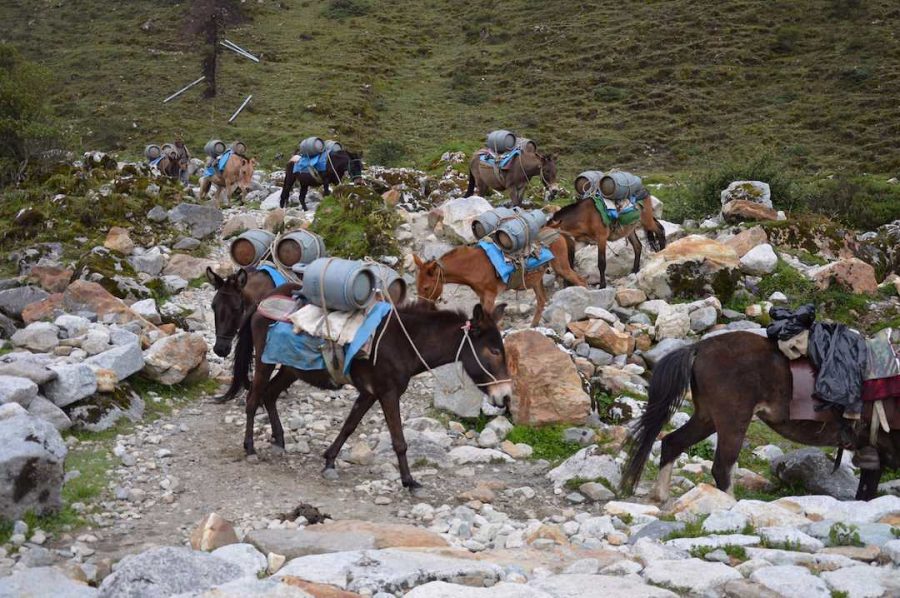
Guide to the Salkantay Trek: How to Book the Trek
When to Go
The Salkantay Trek is open all year round, but note how much rain (and mud) you are willing to handle before booking. The Peruvian Andes has two seasons: wet season and dry season.
- Dry Season: late April to mid-October
- Wet Season: mid-October to late April
- Rainiest months: December, January and February
- Peak Season: May to September
- Shoulder Season: mid-March to May; October to mid-November
- Off Season: mid-November to mid-March
The Salkantay trail will be busiest during May to September, but it will still be less crowded than the Inca trail during these times. Consider booking your trip for late April or early October to avoid both rain and trail congestion.
Info on Hiking Permits
Hiking permits are not required for the Salkantay Trek, however, you do need a ticket to enter Machu Picchu, the ancient Inca citadel. If you plan on hiking Huayna Picchu or Machu Picchu mountain once you reach the final Inca ruin at the end of the trek, a permit for these mountains are required. The Huayna Picchu hike is the more popular trek, restricted to 400 permits per day, so be sure to book well in advance.
Tour or Solo Trek
Note that the Salkantay Trek (unlike the Inca trail) can also be done without a tour. This requires a lot of extra preparation and separate bookings for buses, trains, excursions, Machu Picchu entrance tickets and more. If extensive trip planning, trail meal preparations and negotiations with local are your forte, then the solo trek is for you.
That being said, most people opt for the tour so they can spend less time organizing the trail and more time enjoying it. Either way, choose the option that best suits your trekking style.
Booking Lead Time
It is recommended that you book your tour for the Salkantay Trek as soon as you have decided upon your dates. However, if your plans are subject to change (as is often the case), you can book this trail with many tour companies merely a few weeks in advance or even when you arrive in Cusco (not recommended).
Additional excursions and hikes require more lead time than the Salkantay Trek booking itself (such as the Huayna Picchu hike). If Machu Picchu is the focus of your visit in Peru, do not leave booking until the last minute as spots aren’t guaranteed. Regardless if you decide to book a tour or go solo, we recommend booking your trip as far in advance as possible.
Packing List
- Passport (you need it to enter Machu Picchu)
- Layers of clothes (to account for cold nights/mornings and very warm days)
- Clean outfit (for your day in Machu Picchu after a shower in Aguas Calientes)
- Bathing suit (or clothes to soak in if you opt for the hot springs excursion)
Download the Complete Machu Picchu Packing List Here

Guide to the Salkantay Trek: Trail Details
Number of Days
The Salkantay Trek is typically completed in 5 days and 4 nights. It is also possible to do it in 4 days and 3 nights if you opt out of certain sites and are willing to go at a faster pace.
Trail Specs
Difficulty: Medium to Difficult
Maximum Altitude: 4,600m (15,090ft)
Total Distance: 74km (45.98 miles)
Weather
As you ascend from Cusco to the peak altitude, you will be moving from warm climate at low elevation to temperatures near freezing. Be prepared for changing and sometimes unpredictable weather.
Dry season temperature:
- Day: 20ºC – 25ºC (68ºF – 77ºF)
- Night: -1ºC – 7ºC (30ºF – 45ºF)
Wet season temperature:
- Day: 17ºC – 22ºC (63ºF – 72ºF)
- Night: 4ºC – 10ºC (39ºF – 50ºF)
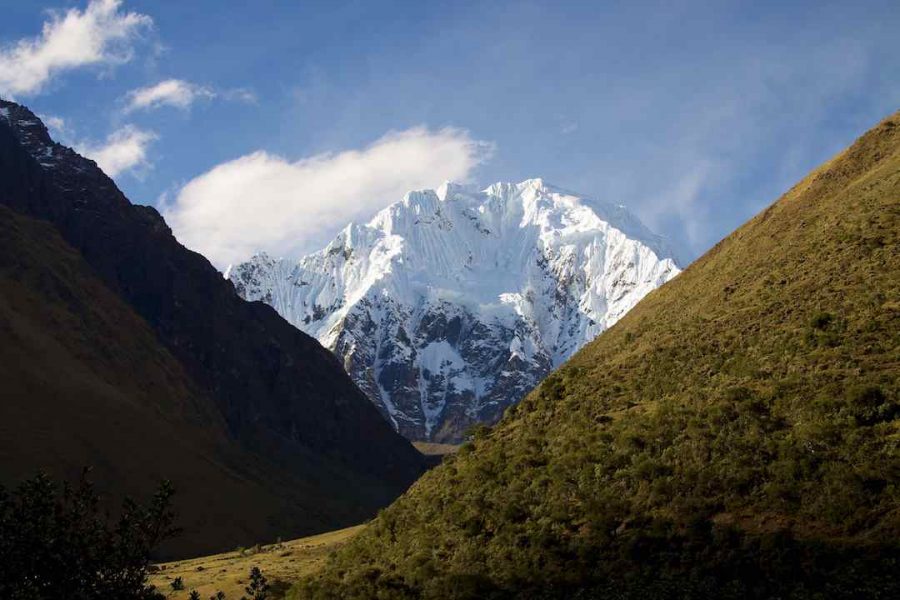
Guide to the Salkantay Trek: Trek Overview
| Day 1 | Mollepata to Salkantaypampa | 13km (8.08 miles) | |
| Day 2 | Salkantaypampa to Collpapampa | 22km (13.67 miles) | |
| Day 3 | Collpapampa to La Playa | 16km (9.94 miles) | |
| Day 4 | La Playa to Aguas Calientes | 19km (11.81 miles) | |
| Day 5 | Aguas Calientes to Machu Picchu | 4km (2.49 miles) |
Your Typical Lares Trek Itinerary
Pre-Trek
The Salkantay Trek begins in Cusco. Be sure to arrive a day or two before your journey begins to acclimatize yourself with the high altitude.
Day 1 – Cusco – Mollepata – Soraypampa – Salkantaypampa
From the city of Cusco, a 3 hour drive by bus or car will take you to the town of Mollepata. From here you will either hike or take another transport to Sayllapata before trekking to Soraypampa. The first day will end at Salkantaypampa. Day 1 is the gentlest day of hiking, which allows you extra time to adjust to the altitude.
Day 2 – Salkantaypampa – Soyrococha – Abra Salkantay / El Passo – Huaracmachay – Colpapampa
Prepare yourself well for day two as it includes some of the most challenging parts of the entire Salkantay Trek. After hiking from Salkantaypampa to Soyrococha, you will encounter multiple switchbacks that increase in steepness as you climb. This zig-zag trail is called the 7 culebras (7 snakes).
The view of Salkantay from the top of the Culebras is remarkable. While ascending to reach Soyrococha, you may notice the cool, thin air due to the high altitude, be sure to pace yourself and dress appropriately. After continuing upwards, you will finally reach the peak at the Salkantay pass then begin the descent.
Here the scenery will change from the mountainous vista to the dense forest jungle as you go from the Salkantay pass down to Huaracmachay and then to Colpapampa.
Day 3 – Collpapampa- La Playa
Day 3 offers majestic waterfalls, the Ceja de Selva jungle zone, and a wide variety of plants, flowers and birds. The morning will begin with 3 hours of comfortable trekking from Collpapampa, along the Salkantay river to La Playa. La Playa is a small town offering one of the largest lodging on the trail. Depending on your tour, you may spend time on a coffee plantation where you can harvest and roast your own coffee.
Optional: Hot Springs in Colcamayu (in Santa Teresa)
This option is available on either day 3 or day 4
Day 4 – La Playa – Hidroelectrica – Aguas Calientes
Day 4 offers a number of route and activity options for getting to Aguas Calientes, with the Llactapata (Inca Ruin) being the most common. These are typically agreed upon with your tour group before departure.
Option 1: Hot Springs in Colcamayu
Option 2: Llactapata (Inca Ruin)
Option 3: Zip-lining at Cola de Mono
Whichever option you choose, day 4 will end in the town of Aguas Calientes where you will get to stay in a hostel or hotel for the first time on the trip. Be sure to take advantage of the shower before your day at Machu Picchu.
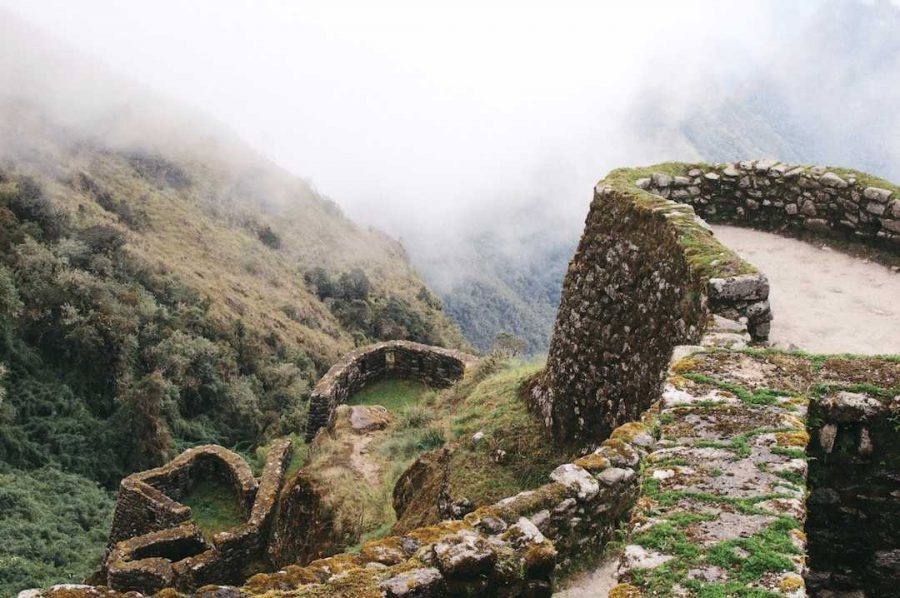
Day 5 – Aguas Calientes – Machu Picchu – Cusco
There are two options to get from Aguas Calientes up to Machu Picchu.
Option 1: Take the Steps
The stairs up to Machu Picchu has over 2,000 steps and can take a good 1.5 hours. If you choose this option, be sure to depart early to avoid long queues at Machu Picchu and be prepared to arrive very sweaty.
Option 2: Take the Bus
The first bus departs around 5:30am with queues beginning at 5am during peak season. The journey takes 30 minutes and tickets cost around USD$20. This is a great option to save your time and energy for the day viewing Machu Picchu.
While in Machu Picchu, there is the option to climb Huayna Picchu or Machu Picchu mountain. Recall, both treks require a permit, so be sure to book well in advance. The more popular Huayna Picchu has only two climbing times (7am and 10am). If you have a permit for this hike, plan your schedule for day 5 accordingly.
After exploring Machu Picchu, you can either walk (1.5 hours) or take a bus (0.5 hours or longer with queues) back down to Aguas Calientes. From there a combination of downward trekking and transportation will be required to return back to Cusco.
Tour group travelers will likely have train tickets booked to Ollantaytambo where you will then catch a mini-bus or car back to Cusco. Solo travelers may trek down to take the bus from Hidroelectrica Station to Cusco. This is a longer, but cheaper route than getting a train.

Post-Trek
As the trek finishes back in Cusco on day 5, be sure to plan accommodations and a well-deserved day of rest to recover after your Salkantay journey.
"Two roads diverged in a wood and I - I took the one less travelled by, and that has made all of the difference."
- Robert Frost
Featured Image by: Marco Havnanian

